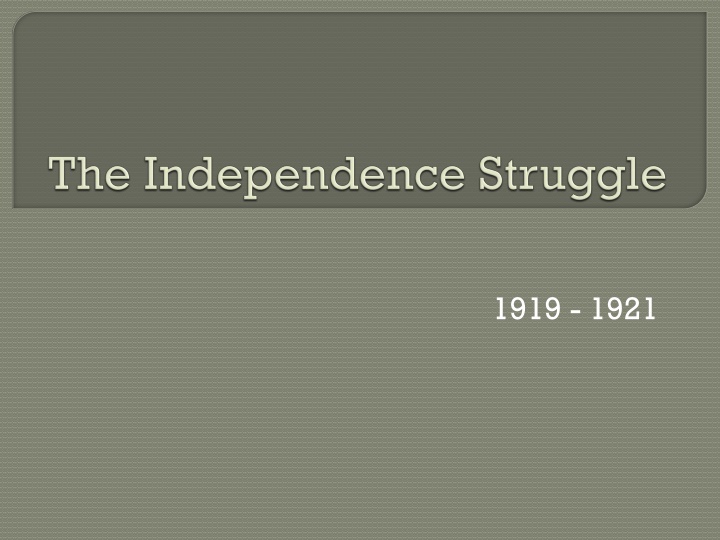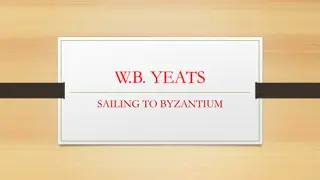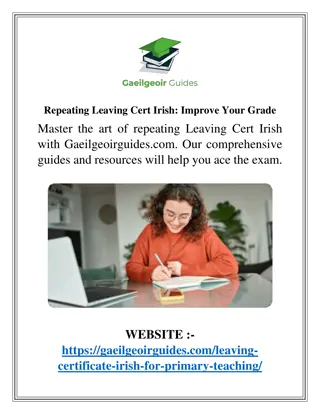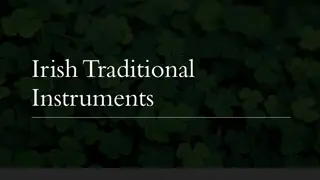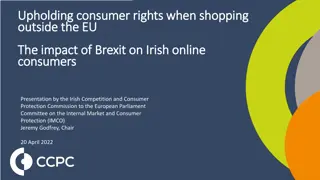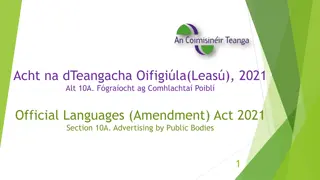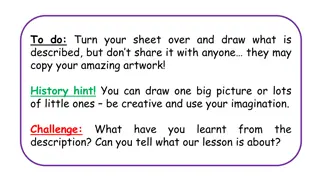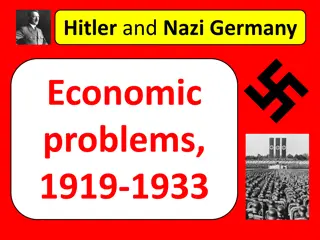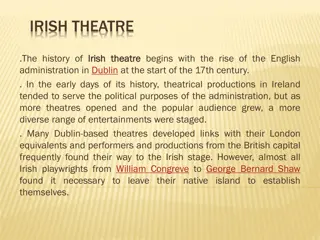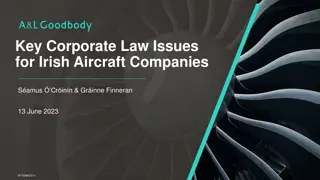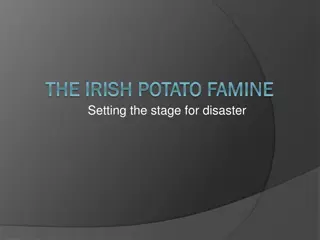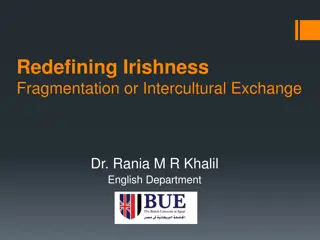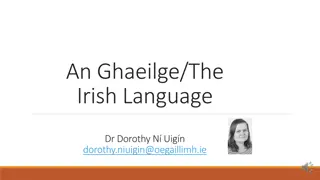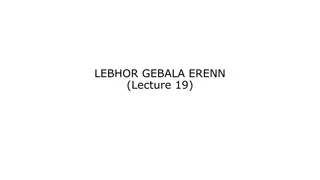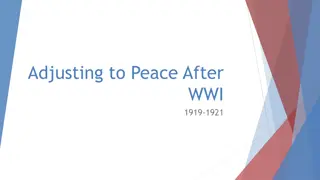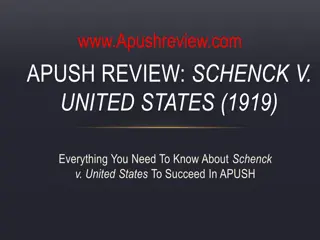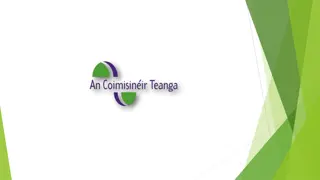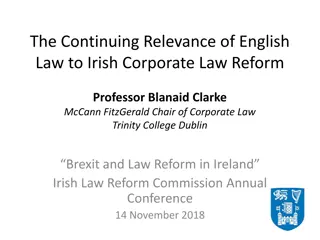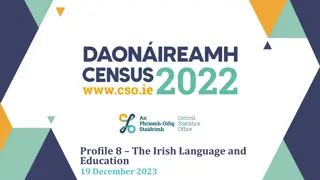The Fight for Irish Independence: 1919-1921
Nationalists in Ireland embarked on a bold movement for independence from Britain between 1919 and 1921. This campaign saw Sinn Fein's passive resistance and the Irish Republican Army's guerrilla warfare tactics, as well as the establishment of the Dail Eireann and the election of an alternative government led by Eamon de Valera. The Irish strived to gain control over their country amidst political turmoil and resistance.
Download Presentation

Please find below an Image/Link to download the presentation.
The content on the website is provided AS IS for your information and personal use only. It may not be sold, licensed, or shared on other websites without obtaining consent from the author.If you encounter any issues during the download, it is possible that the publisher has removed the file from their server.
You are allowed to download the files provided on this website for personal or commercial use, subject to the condition that they are used lawfully. All files are the property of their respective owners.
The content on the website is provided AS IS for your information and personal use only. It may not be sold, licensed, or shared on other websites without obtaining consent from the author.
E N D
Presentation Transcript
Between 1919 and 1921, Nationalists in Ireland organised a strong campaign to gain independence from Britain. The campaign took two forms.
These forms were: 1. Sinn Fein organised passive resistance - a policy of opposing the British government without using violence. The Irish Volunteers (who now became known as the Irish Republican Army, or IRA) orgainsed a guerilla warfare campaign.
GuerillaWarfare:Hit and run tactics used by the Irish against the British during the War of Independence in Ireland. The Irish would ambush the British and then retreat through the back country roads as they knew the areas much better than the British. (Key Word)
Sinn Fein followed a policy of abstention. Abstention: Policy of being absent. Sinn Fein withdrew from Westminster and set up their own parliament in Dublin, the Dail. (Key Word)
On January 21st1919, Sinn Fein held a meeting of the first Dail Eireann. It was held in the Mansion House in Dublin. On twenty seven TD s attended because the rest were either in jail or on the run.
The Home Rulers and the Unionists refused to attend. On that first day the Dail declared: 1. The Declaration of Independence. 2. A message to the Free Nations of the World. 3. A programme to improve working and living conditions.
At a later meeting the Dail elected an alternative government. Eamon de Valera, who had been rescued from jail in England, was elected President of the Dail. See textbook for the other ministers!
The new Sinn Fein government set about gaining as much control over the country as possible. 1. They gained control of local government. 2. They set up Sinn Fein courts to try people for crimes. 3. Collins organised a Dail loan to raise money for the government.
On the same day the first Dail met, 21stof January 1919, and RIC patrol was ambushed in Soloheadbeg, Co. Tipperary. A local IRA unit led by Dan Breen and Sean Treacy carried out the ambush.
The IRA attacked police who were guarding a supply of gelignite going to a nearby quarry. Two policemen were shot dead. These were the first shots of the War of Independence.
http://policehistory.com/soloheadbeg.ht ml Police report on ambush.
The IRA used guerilla tactics against the British forces. These were ambush, or hit and run tactics. The IRA s main target was the RIC.
The IRA attacked isolated barracks in the countryside to get arms and ammunition. The IRA also intimidated members of the RIC and their family members.
https://www.youtube.com/watch?v=znrD WkDhYXM 1. What does Dan Breen say the British agents knew? 2. What is Dan Breen s regret? 3. Why does Dan Breen say, you couldn t leave anyone alive? 4. What does Dan Breen describe the Irish people as?
The IRA also operated an intelligence network. They used spies to gather information. This was organised by Michael Collins, who was the Director of Intelligence for the IRA.
Collins got information from secretaries, porters and policemen. He was even helped by contacts in the Dublin Metropolitan Police. He used this information to direct operations.
He also organised a special group in Dublin called The Squad . Their job was to kill British spies and detectives. The British government had a bounty of 10 000 on Collins but failed to capture him.
As the IRA increased in numbers. Local units called flying columns were formed. The men in these units lived off the countryside, getting food and shelter from local people.
Look at the map in your textbook on page 246 to see where the majority of the fighting took place around the country! https://www.youtube.com/watch?v=qdl7 qdNexuU
David Lloyd George, the British Prime Minister realised that he was going to have to take some action in Ireland. He recruited two different groups to send to Ireland to deal with the Irish rebels.
1. The British government recruited ex- soldiers to overcome the shortage of recruits to the RIC. Members of this new force became known as the Black and Tans because they wore a mixed army and RIC uniform.
2. The government also recruited ex- officers. These were known as the Auxiliaries.
The Black and Tans and the Auxiliaries were not able to deal with the guerilla tactics of the IRA. Very often, they carried out reprisals against local people because of attacks on themselves. They raided and burned houses, beat and shot people.
These actions helped the IRA as people were more willing to support them when they were being treated so badly by the British forces.
https://www.youtube.com/watch?v=SJv8QV RT09s https://www.youtube.com/watch?v=qsfQM CCXb30 (scene from Michael Collins ) 1. What is the Black and Tans purpose in Ireland? 2. How do the Irish react to the Black and Tans? 3. How do the Black and Tans in return react to the Irish?
https://www.youtube.com/watch?v=x_IX yQiY11M (25:00)
The British Government also introduced the Government of Ireland Act, 1920. Under this Act, two parliaments were set up, one in Belfast and one in Dublin. Sinn Fein rejected this Act.
Flying columns took part in large scale ambushes. Their leaders, such as Tom Barry, Liam Lynch and Ernie O Malley, became well known.
Two of the most important ambushes were at Kilmichael and Crossbarry, Co. Cork, both of which were carried out by Tom Barry s flying column. http://kilmichael.org/hisambush.htm https://www.youtube.com/watch?v=Qob uRoXfL_0
1. Murder of Mayor Cork, Tomas MacCurtain in front of his family 2. His successor, Terence MacSwiney, went on hunger strike and died 3. Bloody Sunday, 1920 4. IRA attack on the Custom House
https://www.youtube.com/watch?v=OUQ HfqL5aqg (interview with Squad member, Vinny Byrne) https://www.youtube.com/watch?v=QOi QRkK1tyg (scene from Michael Collins ) https://www.youtube.com/watch?v=Jmno -XmdYJw
